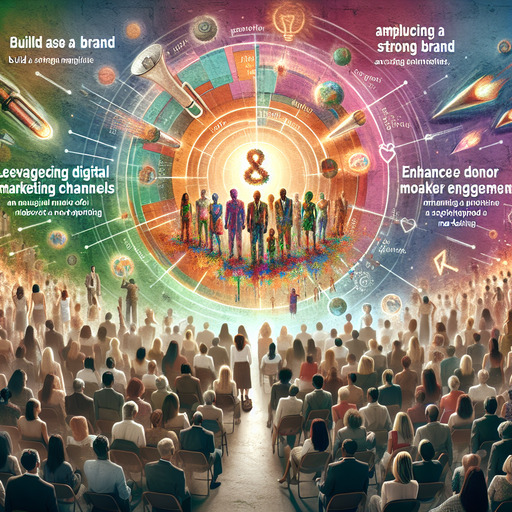
-
Table of Contents
- Effective Non-Profit Marketing Strategies: Engaging Donors and Amplifying Your Cause
- Understanding the Importance of Non-Profit Marketing
- 1. Building a Strong Non-Profit Brand
- 2. Leveraging Digital Marketing Channels
- 3. Enhancing Donor Engagement
- Conclusion: Amplifying Your Cause Through Strategic Marketing
- Questions and Answers
Effective Non-Profit Marketing Strategies: Engaging Donors and Amplifying Your Cause
In today’s competitive landscape, non-profit organizations must adopt innovative marketing strategies to stand out and effectively engage donors. With limited resources, non-profits need to maximize their outreach efforts to ensure their message resonates with potential supporters. This article explores actionable strategies for non-profit marketing, focusing on digital platforms, branding, and donor engagement.
Understanding the Importance of Non-Profit Marketing
Non-profit marketing is crucial for raising awareness, attracting donors, and driving engagement. By leveraging effective marketing strategies, non-profits can amplify their cause and make a significant impact. Let’s delve into some key strategies that can help your organization thrive.
1. Building a Strong Non-Profit Brand
Your brand is the face of your organization. A strong brand communicates your mission, values, and impact, making it easier for donors to connect with your cause.
- Define Your Mission: Clearly articulate your mission and values to create a compelling narrative.
- Consistent Messaging: Ensure all communications reflect your brand’s voice and message.
- Visual Identity: Develop a cohesive visual identity, including logos and color schemes, to enhance recognition.
For example, Charity: Water has successfully built a recognizable brand by consistently sharing stories of impact and maintaining a strong visual identity.
2. Leveraging Digital Marketing Channels
Digital marketing offers cost-effective ways to reach a broader audience. Here are some strategies to consider:
- Social Media Engagement: Use platforms like Facebook, Instagram, and Twitter to share stories, updates, and engage with your audience.
- Email Campaigns: Develop targeted email campaigns to keep donors informed and engaged.
- Content Marketing: Create valuable content such as blog posts, videos, and infographics to educate and inspire your audience.
Consider the case of the ALS Association’s Ice Bucket Challenge, which went viral on social media, raising over $115 million for ALS research.
3. Enhancing Donor Engagement
Engaging donors is essential for building long-term relationships and ensuring continued support.
- Personalized Communication: Tailor your messages to individual donors to make them feel valued.
- Impact Reporting: Regularly update donors on how their contributions are making a difference.
- Events and Webinars: Host events and webinars to connect with donors and showcase your work.
For instance, World Wildlife Fund (WWF) effectively engages donors by providing personalized updates and exclusive content through their donor portal.
Conclusion: Amplifying Your Cause Through Strategic Marketing
By implementing these non-profit marketing strategies, your organization can enhance its outreach, engage donors, and amplify its cause. Remember, a strong brand, effective digital marketing, and personalized donor engagement are key to achieving your mission.
For further reading on non-profit marketing strategies, visit Wikipedia’s page on Nonprofit Organizations.
Questions and Answers
Q1: How can non-profits effectively use social media for marketing?
A1: Non-profits can use social media to share impactful stories, engage with followers through comments and messages, and run targeted ad campaigns to reach a wider audience.
Q2: What are some cost-effective digital marketing strategies for non-profits?
A2: Cost-effective strategies include leveraging social media platforms, creating engaging content, and utilizing email marketing to maintain donor relationships.
Q3: How can non-profits measure the success of their marketing efforts?
A3: Non-profits can measure success through metrics such as website traffic, social media engagement, email open rates, and donor retention rates.
If you’re interested in learning more about our services or have questions about this blog, please reach out to us via our contact page.